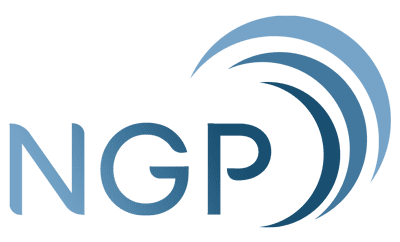You’ve likely heard the term “PR”, perhaps linked to celebrities and massive corporations in hot water. But Public Relations is so much more than handling negative press. It’s for any person – big or small, drama-free or not, to have a shot at building, maintaining, and protecting a positive brand image. Which will influence target audiences and ultimately drive business success!
Let’s get into it.
Traditional Public Relations
Back in the day, PR relied on conventional communication tactics – like press releases, media relations, and print publications – to reach mass media audiences through established channels. Specifically, flashy product commercials between TV episodes with catchy jingles or glamorous magazine spreads detailing summer must-haves (price tags and all)!
Key Strategies and Tools
- Press Releases – Distributing a formal announcement to relevant news outlets, helps you gain coverage and reach a wider audience.
- Print Publications – Securing features in newspapers, magazines, and other printed materials can help significantly enhance your brand’s visibility and image. You can provide quotes and information and even coordinate interviews or photoshoots.
- Online Publications – These days, broadsheets and print publications often have online counterparts. Enhance mileage by getting published on both offline and online platforms.
- Media Relations – Building and maintaining relationships with journalists and media networks, increases the likelihood of a favorable portrayal of the company in the news.
- Press Conferences/Media Engagement – With these established relationships, engaging these media contacts will be valuable for your brand. Press conferences and media engagements give the media a first glimpse into your latest campaign or brand effort and will allow them to come up with fresh, relevant, and timely content to publish.
- Broadcast Executions – Engaging existing broadcast media – on TV or online – with a high following and viewership helps you reach a different audience, too. These kinds of engagements allow for a deeper dive into your PR. Talk about details of a product, benefits of a service, availability, launch date, impact, and more.
Advantages and Disadvantages
While traditional PR excels at reaching a broad audience and disseminating information, its limitations lie in its one-way communication style – leaving potential and existing customers without a direct line to ask questions or get immediate feedback. Plus, securing a TV commercial slot, a billboard with high traffic, or a feature in a famous media outlet can be quite costly.
Digital Public Relations
Digital public relations leverages everything online – social media, content marketing, influencer partnership – to connect your stories with people where they’re at (which is usually online) and stay updated on the latest trends! On top of that, you can tap into channels that enable you to build communities, see real-time results, and even show the human side of your brand.
Key Strategies and Tools
- Social Media Management – Create and share high-quality posts and interact with your followers on platforms like Instagram, Facebook, TikTok – you name it. The goal is to build relationships, maintain engagement, and ultimately convert followers into loyal customers.
- Content Marketing – Provide your audience with informative, entertaining, or helpful content like how-to blog posts, product demonstration videos, and Q&A livestreams! This will help you attract and retain your audience.
- Influencer Partnerships – Team up with influential online personalities (or influencers) who share your brand’s values and mission to authentically showcase your products or services.
Advantages and Disadvantages
Though digital public relations offers a two-way conversation with your audience – wherein you get to hear their thoughts and see the real-time impact of your efforts – it also demands consistent effort, much like any good, flowing conversation. So, to maintain this engagement, it’s essential to stay abreast of the latest trends, keep up with online chatter, and continually innovate with the newest technology like AI SEO.
Corporate Social Responsibility (CSR)
PR isn’t limited to just networking; it’s also about showing the public who you are and what you stand for. With corporate social responsibility, you can demonstrate your commitment to social and environmental causes, earning trust and loyalty from like-minded audiences.
Key Strategies and Tools
- Sustainability Initiatives – These are efforts aimed at reducing the company’s environmental footprint. These could be achieved through recycling, responsibly sourcing materials, and adopting cruelty-free practices in product development.
- Community Engagement – These programs are designed to give back to local communities by donating to their causes and engaging in conversations that matter to the community.
- Ethical Labor Practices – These ensure safe working conditions and a discrimination-free environment where employees feel valued and respected.
Advantages and Disadvantages
There’s no doubt that CSR can do wonders for your company’s image, but it requires a genuine commitment. Think of it like planting a mango tree – you need to invest time, money, and resources to nurture its growth. However, rest assured that the rewards will be worth it, both for your company and the community.
Crisis Management
Things don’t always go according to plan. Product issues, social media gaffes, or major incidents can happen and spread like wildfire online. In such times, having PR professionals skilled in crisis management ensures swift action to minimize damage to the organization and its stakeholders while strengthening your brand’s long-term image.
Key Strategies and Tools
- Crisis Communication Plan – Have a predefined plan that outlines exactly how your company will operate amid a crisis – who says what, when they say it, and how they say it. This will ensure you are able to respond quickly and effectively.
- Media Training for Spokespersons – Prepare key individuals to interact with the media effectively, even under pressure. They will learn how to deliver clear messages and handle tough questions with grace, preventing any missteps that could aggravate the situation.
- Real-Time Monitoring and Response – Monitor conversations in social media and blogs for any mentions of your brand. This will help you identify potential issues early on, so you can address them even before they escalate.
Advantages and Disadvantages
No company is immune to crises, big or small. That’s why having a solid crisis management plan in place is vital. However, it’s important to remember that a plan is only as good as the people handling it. You’ll need a PR team that’s proactive, organized, and ready to sprint into action even under intense pressure!
Internal Public Relations
Last, but not least, there’s internal public relations. This makes sure everyone inside the company feels valued and informed! After all, happy employees = happy customers!
Key Strategies and Tools
- Internal Newsletters and Bulletins – Keep your employees in the loop about what’s happening, from new products to upcoming changes – so they’re not left in the dark!
- Employee Recognition Programs – Acknowledge and reward employees’ contributions and efforts. This will show you appreciate them and their efforts, which can go a long way in boosting morale and motivation!
- Internal Social Networks – Provide platforms where employees can connect, collaborate, and share ideas. It’s a great way to foster teamwork and make communication efficient!
Advantages and Disadvantages
When you nail internal PR, employees will feel appreciated, which trickles over to better morale and a more productive team! Still, this does take consistent effort and resources to maintain.
PR is for everyone!
There you have it – the 5 types of PR! Each one brings its unique strengths to the table, but when strategically combined, they can create a synergistic PR strategy that ensures effective communication with all stakeholders and seamless navigation through crises! So, whether you’re a solopreneur or a Fortune 500 company, PR can help you connect with people who matter the most and establish a brand that stands the test of time!
Ready to take your brand’s PR to the next level? Work with NGP-IMC today and achieve measurable results!

Gayle is a copy editor and contributing writer for NGP-IMC, covering all the latest buzz around PR and digital marketing. Previously, she’s penned personality-packed ad copies, headlines, print journals, and articles for industry-leading brands and publishers such as foodpanda, Under Armour, Klook, and more! Additionally, she’s profiled Olympic gold medalist Hidilyn Diaz, developed scripts for South Korea’s SK-Zic and interviewed female riders to shed light on their experiences at the forefront of dismantling gendered expectations within the male-dominated delivery space.


